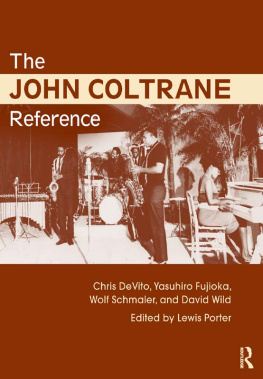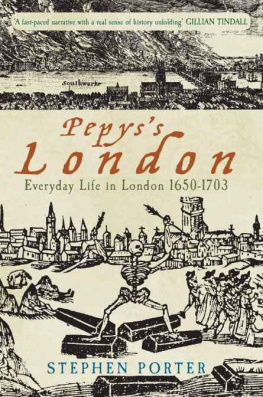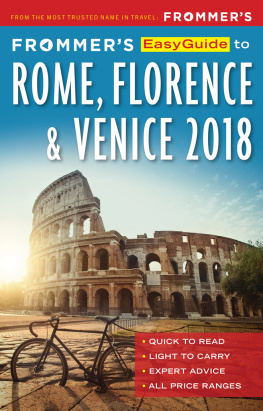1
GREAT BRITAIN
AND IRELAND
British and Irish galleries are fun. Not only do they contain some of the worlds greatest paintings, but these paintings are often housed in settings that make the overall experience of visiting the galleries a multilayered treat.
The National Gallery just may be the worlds foremost art museum. It is literally in the very middle of London, on Trafalgar Square. The view from the gallery overlooking the Thames and the parliament buildings is stunning. There are two entrances the Sainsbury entrance on the left as you face the gallery, and one in the centre. If you leave by the centre door you look down toward Westminster and the vast scene of a city in motion the square before you is always full of people.
And get this the gallery is free. Just imagine that, if you worked nearby, every day at noon you could step in and have a rendezvous with a different painting. What a glorious opportunity!
Then theres the recently renamed Tate Britain , which reminds me of why I wrote this book. It offers sumptuous and varied fare in the work of many important artists. In my list of favourites, I note paintings by Millais, Waterhouse, and Whistler as well as Turner. The gallery has so many Turners from large to small, in several media that it cannot display them all at once, so they are on rotating permanent exhibition.
Go to the back of the gallery and up a staircase to a study centre that has special exhibitions and many of Turners sketchbooks (bequeathed by him to the nation) on view. Be sure to look at some of them.
The museum also has a marvellous video demonstration by Michael Chaplin, a contemporary painter, that shows how Turner prepared his medium and painted watercolours. It explains how he would have mixed colours, worked with wet paper, how he scratched watercolour surfaces, and how his drawings were done.
It conveys Turners techniques for drawing, painting, using graphite, chalk, pencil, and a variety of brushes. It also explains the development of colours for artistic practice and when they were invented. It is the best demonstration Ive seen on how art is created. Lasting a total of twenty minutes, its a crash course on watercolour. The room has eight drawing tables with paper and pencils, and before you is a Turner sketch. Try to copy it, and keep your work. You will be amazed by what you have learned in such a short time and delighted by your new-found appreciation of the artistic process.
The Queens Gallery on the left side of Buckingham Palace (facing it) is a superb gallery. In most galleries, the attendants are little pools of sloth calculating their next time off. Here the attendants, all proud to represent Her Majesty, are quick, courteous, and efficient. This gallery, with its rotating collection, offers the quintessential British experience of art.
The Wallace Collection offers, in my opinion, a mixed experience. Its luncheon under a glass-covered canopy over a courtyard is memorable. However, as pleasant as the site is, the collection of paintings is almost lost in the middle of the mumbo jumbo of china, armour, furniture, small sculptures, snuff boxes, swords, rifles, daggers, bowls, medals, plates, vases, bronzes, and Limoges enamels. Some of the glassed-in tiered paintings are stacked in dark rooms without clear identification. It can all be a hopeless mess unless you know what you seek.
You can, nonetheless, take advantage of the free guided tours of the collection that are given each weekday at 1:00 p.m. Admission to the museum, which is open seven days a week, is free though you will be asked for a donation at the entrance.
Within this chapter, I also note some of Britains smaller galleries such as Cambridges Kings College Chapel with its ethereal entrance all of which merit a visit. I then take you over to Ireland to introduce you to the Irish National Gallery in Dublin. Sitting close to the greenest of green parks, this gallery offers delights both within and around.
In the capital cities of England and Ireland, there is much to experience. Make the time to really see the twenty essential images I introduce below and, with whatever time you have left, be sure to embrace the fun that these collections have to offer.
THE PAINTINGS
1. The Wilton Diptych

Anonymous, 139599
National Gallery, London, England
Photo: National Gallery, London / Art Resource, NY
The Wilton Dipytch is a stylized painting on oak panels in the Sienese manner thin alabaster figures, delicate but all having the same personality.
The little folding altarpiece shows Richard II kneeling, in the company of King Edmund, King Edward the Confessor, and John the Baptist. The angels surrounding the Virgin and Child wear garments emblazoned with the white hart, Richards symbol, and crowns of roses.
The diptychs principal colour (aside from gold) is blue, a royal colour in Richard IIs time. Until the middle of the thirteenth century red dyed cloth, white undyed cloth, and black were European cultures dominant colours.
The bright blue pigment was made of lapis lazuli, which was very costly and contained speckles of iron pyrite fools gold. Marco Polo, in 1271, while in a mountain range to the north of Kabul, Afghanistan, wrote, And you must also know that in another mountain of the same region is found the stone [lapis lazuli] of which azure is made the finest and best azure in the world.
Blue slowly became an attribute of the Virgin in paintings.
The angels are all intent, all the same, intent, intent: the sameness creates a prevailing melody.
A tiny orb sits at the top of the flagpole bearing the red-and-white-cross banner, perhaps a symbol of the Resurrection and of St. George, patron saint of England. In the orb, if you peruse a blow-up of it, is a green island with a castle and a boat in a silver sea, representing England under the protection of the Virgin and Child.
The back of the altarpiece shows a white hart with a gold crown-shaped collar and chain hanging from its neck.
The king may have used this altarpiece for nightly prayers, perhaps as a source of comfort. He was deposed in 1399, held in captivity, and executed in 1400.
The artist has captured Richard II as a pompous little snippet of a know-it-all. Look at him! But he could be tough. In 1381 Wat Tyler from Kent and Jack Straw from Essex led the Peasants Revolt. They burned Savoy House, home of John of Gaunt, the kings uncle and regent until he came of age. Richard II met Tyler in Smithfield, promising to treat for peace. There was a scuffle, Tyler was killed, and the peasant rabbles ringleaders were executed. Richard II had deceived them.
My view of Richard II is found in Shakespeare, who customarily rewrote history toward his plays necessities. John of Gaunt, dying, comments bitterly on Richards rule and his dictatorial taking of land ( Richard II , act 2, scene 1):
England, bound in with the triumphant sea
Whose rocky shore beats back the envious siege
Of watery Neptune, is now bound in with shame
With inky blots and rotten parchment bonds:
That England, that was wont to conquer others,
Hath made a shameful conquest of itself.
2. The Doge Leonardo Loredan

Bellini, Giovanni, 15014
National Gallery, London, England
Photo: National Gallery, London / Art Resource, NY
Loredan led Venice as doge, the elected chief magistrate and military leader, for twenty years of constant warfare. It was a desperate struggle that he oversaw, and Loredan was brutally intent on advancing the interests of his republic. In the portrait he exudes calm inward majesty, focus, and unchallengeable authority dont dare flout me!














